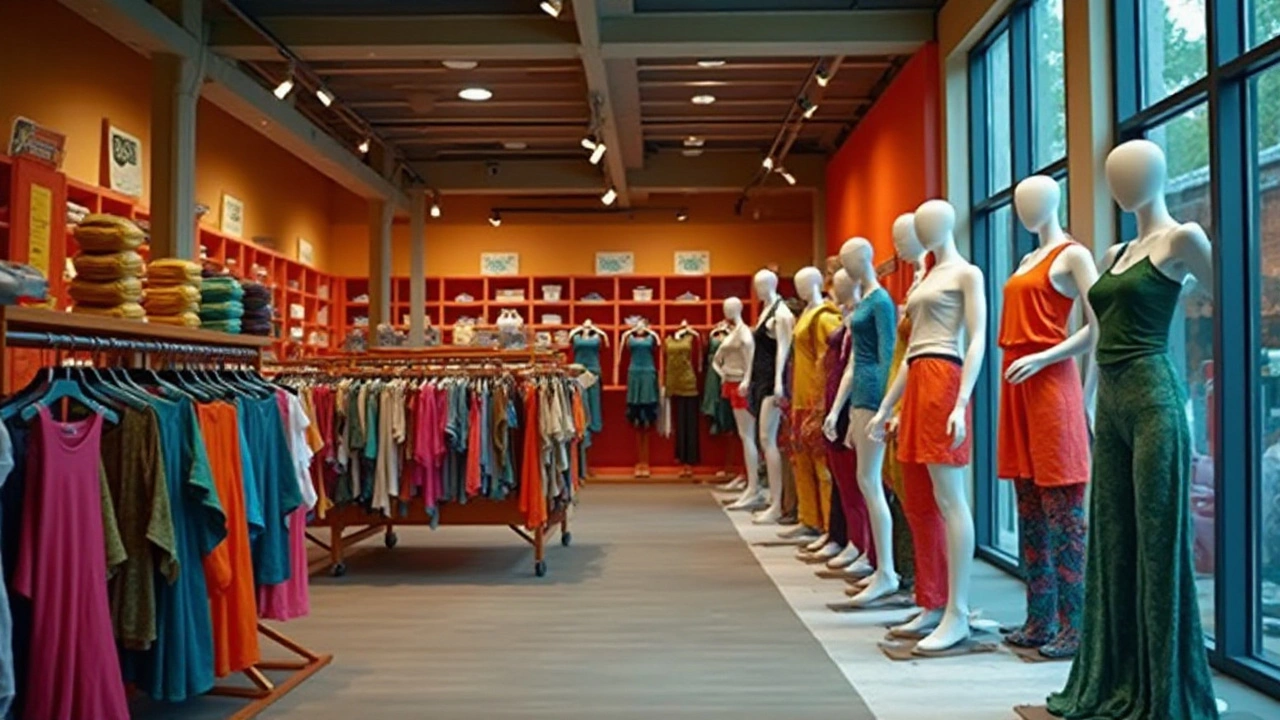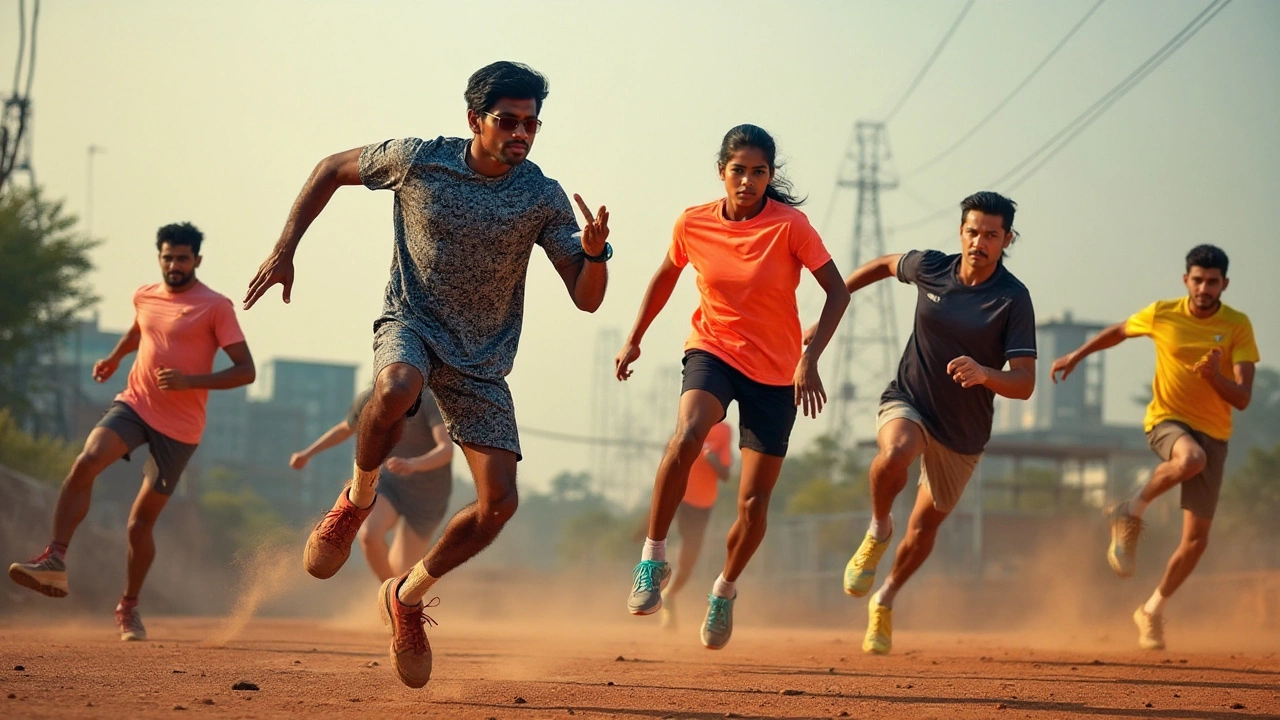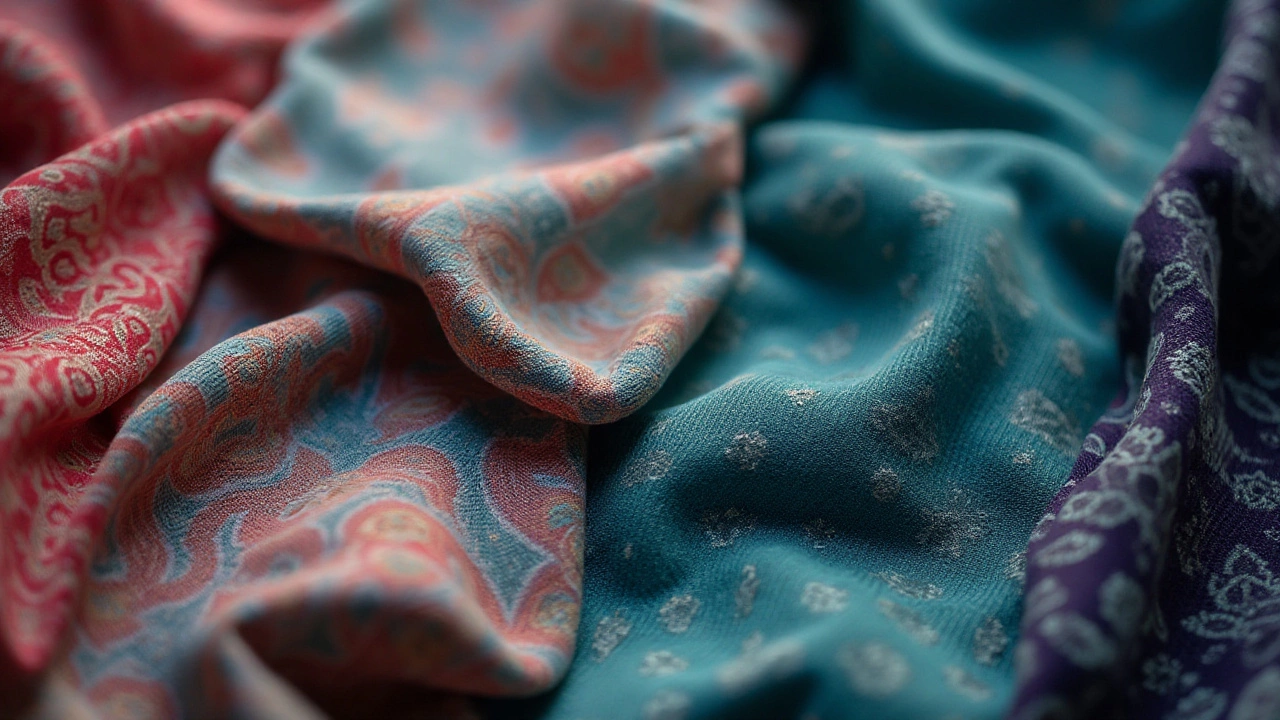Understanding the Essentials of Sportswear: What Truly Defines Active Apparel

Sportswear has come a long way since the days of basic, one-size-fits-all gym clothes. Today, it's a curated blend of technology, comfort, and style, designed to support and enhance a wide range of physical activities. From breathable fabrics to moisture-wicking properties, the features of modern sportswear are anything but ordinary.
Understanding what defines sportswear involves looking into not just its physical characteristics, but also its functionality. The right sportswear can significantly improve your exercise experience, offering both performance enhancement and injury prevention. In this article, we'll explore the evolution of athletic apparel and identify the key elements that set high-quality sportswear apart from the rest.
Whether you're training for a marathon, hitting the yoga mat, or simply running errands, the right apparel can make all the difference. Let's delve into the fascinating world of sportswear and uncover the secrets to choosing the best gear for your active lifestyle.
- The Evolution of Athletic Apparel
- Key Features of Quality Sportswear
- Choosing the Right Fit for Your Activity
- The Impact of Technology on Sportswear
- Sustainability in Sportswear: A Growing Trend
The Evolution of Athletic Apparel
The journey of sportswear from practicality to fashion icon status is a fascinating tale of function meeting design. Originally, athletic apparel revolved around pure utility. In the nineteenth century, sports attire was simply modified versions of everyday clothing, with minimal adaptations for athletic needs. Imagine playing tennis in corseted dresses or cricket in woolen suits, which was the reality for athletes of that era.
Major transformations began in the early 20th century, a pivotal moment when societal changes and technological advancements started to redefine athletic wear. The 1920s marked the beginning of a more significant emphasis on performance, as designers introduced lighter fabrics to provide athletes with more freedom of movement. The Olympics served as a showcase for these innovations, pushing sports clothing into the mainstream consciousness. By incorporating materials like cotton and woven blends, athletes like Suzanne Lenglen flaunted both style and practicality on the tennis court.
The post-war period saw the rise of synthetic fibers such as polyester and nylon. This era heralded the invention of stretchable materials, with Spandex becoming a game-changer in allowing unrestricted movement. The 1970s pushed the envelope even further, freeing up clothing styles and bringing about more colors and designs. People began to engage with fitness more actively due to expanding leisure options, leading to an increased demand for specialized athletic clothing catering to the burgeoning gym culture.
Fast forward to recent decades, fitness clothing has become a staple in people's wardrobes, merging the lines between performance gear and everyday wear. Brands like Nike and Adidas emerged not only as providers of sports equipment but as cultural icons, embodying the values of innovation, style, and performance. According to a report by Statista, activewear sales accounted for nearly $353 billion globally in 2023, indicating a growing appetite for stylish and functional apparel.
The integration of technology is the latest leap forward in athletic apparel, with innovations such as moisture-wicking materials and thermal regulation fabrics. These advancements signify the collaboration between design and technology to satisfy the demands of modern-day athletes. A notable example is Under Armour's introduction of HeatGear and ColdGear lines, effectively customizing performance wear for different climates.
"The intersection of style and performance is where innovation thrives," Mark Parker, former CEO of Nike, once stated, indicating an ongoing commitment to pushing the boundaries in sportswear evolution.
The evolution of athletic apparel is a testament to how changes in lifestyle, cultural norms, and technology have influenced the development of athletic wear. As consumer needs and expectations continue to shift, it is fascinating to consider what the future holds for sportswear. Perhaps the next revolution lies in sustainability, with eco-friendly materials and practices becoming mainstream. Whatever the future, the track record shows that athletic apparel will continue to balance performance with innovation, driving forward both sports and fashion industries.
Key Features of Quality Sportswear
When it comes to selecting sportswear, understanding the key features that contribute to its quality can significantly enhance your athletic performance and comfort. One of the most notable attributes of high-quality active apparel is its fabric. The choice of fabric determines various factors such as breathability, moisture-wicking ability, and durability. For instance, synthetic fibers like polyester and nylon are popular due to their excellent moisture management and quick-drying properties, keeping the wearer dry during intense activities. On the other hand, natural fibers such as cotton, though comfortable, tend to retain moisture, which can be a hindrance during prolonged exercise.
Another vital feature of exceptional fitness clothing is its fit and flexibility. Quality athletic wear often incorporates spandex or elastane, granting athletes a range of motion essential for various sports. The right fit can prevent chafing and provide support, especially in areas like the knees and lower back, which are prone to stress and injuries. Moreover, the cut and design of garments, such as flatlock seams and gussets, further enhance comfort by reducing friction and allowing freer movement.
Innovative design is also a hallmark of superior sportswear. Features like strategic ventilation panels, compression zones, and reflective accents not only improve functionality but also add a layer of safety and convenience. Compression technology has been shown to reduce muscle fatigue and increase blood circulation, which is crucial for both performance and recovery. According to a study published in the Journal of Sports Science & Medicine, athletes wearing compression gear experienced less soreness and improved power output, underscoring the impact of design on athletic performance.
Durability is another consideration, as sportswear needs to withstand rigorous use and frequent washing without losing its shape or functionality. High-quality brands often subject their products to various tests, ensuring the materials remain robust against wear and tear. As a consumer, checking for reinforced stitching, fade-resistant dyes, and strong elastics can be indicators of long-lasting apparel.
"In the realm of athletic performance, the right clothing can be as important as the right training," notes fitness expert and author Laura Williams. "Choosing gear that supports rather than hinders can lead to noticeable improvements in both comfort and effectiveness."
Lastly, aesthetic appeal, while subjective, often plays a role in the feeling of self-confidence. Wearing fashionable and well-fitted gear can boost morale, which can be a subtle yet powerful motivator. Brands continually innovate in colorways and designs, offering athletes choices that reflect personal style while retaining functionality.

Choosing the Right Fit for Your Activity
When it comes to selecting the ideal sportswear for your activity, understanding the relationship between fit and function is crucial. The right fit can enhance your performance, prevent injuries, and ensure maximum comfort so you can focus on your workout. Different activities require different types of clothing, as each sport demands certain movements and levels of exertion. Finding sportswear that complements your body and activity is like finding the right tool for a job; it can make all the difference in how you perform.
For those who enjoy running, choosing lightweight garments is pivotal. Look for materials that breathe well and wick away sweat to keep you cool and comfortable. Compression clothing has gained popularity among runners due to supposed benefits like improved blood circulation and reduced muscle fatigue. According to a 2022 study by the Journal of Sports Sciences, runners wearing compression gear reported feeling less soreness after long runs, pointing to its effectiveness in aiding post-run recovery. Athletic wear for high-intensity interval training (HIIT) should focus on flexibility and durability, as these workouts include strenuous exercises that engage the entire body. Apparel engineered with four-way stretch fabric allows for unrestricted movements, which is essential in performing dynamic exercises efficiently.
Yoga and Pilates enthusiasts, on the other hand, might look for stretchy, form-fitting clothes that move seamlessly with the body. Garments should be snug enough to prevent excess fabric from hindering poses, yet comfortable enough to avoid restricting any stretch. Moisture-wicking fabrics are again beneficial, as they help maintain dryness during intense sessions. Some yoga practitioners suggest trying out different styles, such as leggings versus shorts, to determine what allows the greatest freedom of movement.
Yoga teacher and author Tara Stiles once mentioned, "What we wear can affect our practice, not just physically but psychologically too. Wearing something comfortable and fitting helps you focus more on alignment and breathing."When deciding on fitness clothing for outdoor sports like cycling or hiking, it's essential to consider weather conditions. Layering becomes an important aspect of dressing, allowing for adaptations to climate changes throughout the day. Breathable base layers keep sweat away from the skin, while an insulating middle layer retains body heat. A final outer layer, often waterproof and wind-resistant, offers protection against unexpected weather turns. For those concerned about sustainability, many brands are now offering eco-friendly options made from recycled materials, encouraging an environmentally conscious choice without compromising performance.
Choosing sportswear that fits well isn’t just about comfort; it's about maximizing your potential. Fitness enthusiasts who invest time in selecting appropriate clothing based on fit, fabric, and functionality are likely to experience better results, reduced risk of injury, and a greater overall enjoyment of their activities. Remember, the perfect exercise gear supports your movement, adapts to your needs, and inspires confidence as you push through each session. Taking the time to select the right fit for your activity is an investment in both your performance and pleasure.
The Impact of Technology on Sportswear
In recent years, the landscape of sportswear has been dramatically transformed by technological advancements, bringing about a revolution in how athletes and fitness enthusiasts gear up for their activities. Where once natural materials like cotton and wool were the staples of athletic wear, now synthetic fibers and innovative textile technologies take center stage. One prevailing advancement is the development of smart fabrics that adjust to a body’s temperature, ensuring the wearer remains comfortable regardless of the intensity of the workout. These fabrics can actively wick moisture away, keeping skin dry and free from irritation during strenuous activities. Innovations do not stop at textiles; we see technology infusing every layer of sports apparel, from compression garments that aid muscle recovery to UV-resistant materials that protect the skin during outdoor exercises.
Technology has also penetrated the area of customization and personalization of fitness clothing. With digital tools, individuals can now have their sportswear tailored to their unique body shapes and preferences. This includes the integration of 3D body scanning which provides precise measurements, ensuring that workout gear fits perfectly, thereby enhancing both performance and comfort. Another fascinating development is the integration of wearable technology within sportswear. Today, advanced fitness trackers are seamlessly embedded in clothing, offering real-time data on various metrics such as heart rate, calories burned, and distances covered. Such technology empowers athletes by offering insights they can use to optimize their training programs.
The role of technology transcends aesthetics and comfort, heavily contributing to the functionality and safety of active apparel. Reflective clothing and built-in LED lighting have been engineered for improved visibility during low-light conditions, significantly enhancing runner safety during early morning or late-night outings. Moreover, shoe technology has seen remarkable innovation with the introduction of highly responsive cushioning systems and customized sole designs that cater to specific activities, from trail running to court sports. These advancements not only aim to improve performance but also to prevent injuries by providing better support and shock absorption.
A standout contribution of technology to sportswear is in the realm of sustainability. Scientists and designers are now working hand-in-hand to develop eco-friendly sportswear made from biodegradable materials or recycled plastics. These sustainable options are fabricated without compromising on the fitness clothing performance. Remarkably, some brands have begun using biodegradable synthetics that break down harmlessly over time, mitigating the environmental impact compared to traditional polyester and nylon.
According to a report by the Ellen MacArthur Foundation, "The sportswear industry can significantly reduce its carbon footprint by adopting circular fashion principles and utilizing renewable energy sources in manufacturing processes."This shift not only appeals to environmentally conscious consumers but also sets a precedent for a greener future within the industry.As technology advances, the possibilities for innovation in sportswear seem limitless. Future trends hint at even more personalization, with augmented reality applications that help visualize how garments will fit and perform before purchase. We may also witness more breakthroughs in biometric fabrics that actively monitor muscle tension and adjust support accordingly. The continuous interplay between sportswear and technology ensures that athletes of all levels have access to gear that enhances their abilities, underlining the profound role that cutting-edge innovation plays in defining the future of activewear.

Sustainability in Sportswear: A Growing Trend
The movement towards sustainability has touched nearly every industry, and sportswear is no exception. As consumers become increasingly aware of their environmental impact, the demand for eco-friendly active apparel is rising. This shift is changing how sportswear brands operate, pushing them to innovate and adopt greener practices. Sustainability in sportswear goes beyond using environmentally-friendly materials and entails a comprehensive approach, including ethical manufacturing processes and reducing carbon emissions in logistics.
Today's eco-conscious consumers look for transparency in production. They want to know where their clothes come from and how they are made. To meet these expectations, companies have begun to embrace sustainable materials like recycled polyester, organic cotton, and Tencel, which is derived from sustainably harvested wood pulp. This proactive approach not only minimizes environmental impact but also sets a new standard for the industry. In fact, leading companies like Patagonia have long been at the forefront of this movement, showcasing how businesses can thrive while adhering to ecological principles.
"To protect the planet, we must change the way our business operates—it's that simple," noted a Patagonia spokesperson in a recent press release, emphasizing the company's commitment to sustainability.The application of technology in creating sustainable active apparel is another crucial facet. Innovations such as waterless dye technologies and biodegradable fabrics are becoming more prevalent. These solutions not only conserve resources but also prevent pollutants from entering ecosystems. Brands are also leveraging technology to optimize material usage, thus minimizing waste. As sustainability becomes a driving force in the industry, more brands are investing in research and development to find novel sustainable solutions.
Moreover, sustainability isn't solely about the environment; it's fundamentally about ethics and responsibility. Many athletic wear companies are ensuring that their supply chains are free from exploitative labor practices. They are focusing on fair trade certifications and supporting the communities in which they operate. These efforts forge a strong bond with consumers who value ethical considerations alongside functionality and style. The holistic approach to sustainability reflects a shift in consumer values, where clothing is no longer just about aesthetics or performance but also about the story behind it.
Looking at the bigger picture, the trend towards sustainable sportswear is expected to not just continue, but accelerate in the coming years. Consumers, now more informed and engaged than ever, are likely to continue demanding green alternatives, pushing the industry further. The ongoing research into innovative materials and production processes promises to transform sportswear into an epitome of style, performance, and environmental consciousness.
- Jan, 3 2025
- Violet Greenfield
- 0
- Permalink
Write a comment
Written by Violet Greenfield
View all posts by: Violet Greenfield